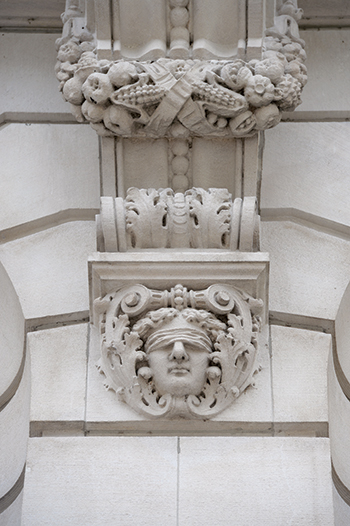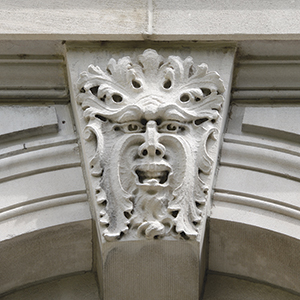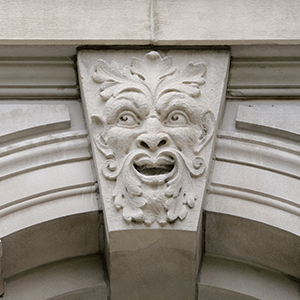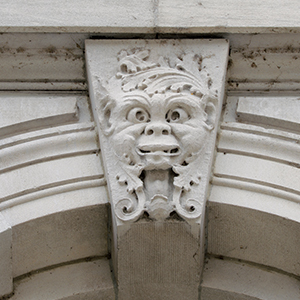Writer: Larry Erickson
Silently, stoically, 28 faces gaze unblinking, as they have for more than a century. They’re the stony sentinels of the Polk County Courthouse, the faces of keystones and pediments on all sides of the building.
They were originally intended to have a better view. Visionaries proposed a courthouse site along the east side of the Des Moines River, across from the library (now home of the World Food Prize Hall of Laureates). The county opted instead for the Fifth Street location of a prior courthouse.
Witnesses to a century of change downtown, the cast of carved characters represents a motley lot: some stern, others comical or serene. Many are variations on an ancient style known as “green men,” visages unself-consciously sporting facial foliage of carved leaves and vines. They were said to represent the circle of life before Disney got into it.
This was no architectural silliness but a studied presentation of Beaux-arts style, which echoed regal traditions of prior eras. The courthouse faces are descendants of countenances that once warded evil from Gothic cathedrals. Such faces share the unfortunate title of “grotesques,” which fits some and seems cruel in reference to others. The blindfolded visages over the north and south entries of the courthouse, for example, appropriately uphold the American standard that justice is blind.
The revered local firm of Proudfoot and Bird built its reputation on creating monumental buildings with an instant impression of history and gravitas. Think of the French chateau style of the Dallas County Courthouse in Adel, designed by the same firm at about the same time. Or study the classical bearing of Lincoln and Roosevelt high schools. Architect George Washington Bird had an eye for historic authenticity and no reluctance to borrow design details from European buildings and traditions.
So long-forgotten masons followed Bird’s design and the artistic example of their anonymous forebears, chiseling features that outlasted them all. Why? A creative opportunity to leave a mark on an important building, a building faithfully true to a style that still draws smiles from passers-by, who pause to ponder faces that don’t smile back.











